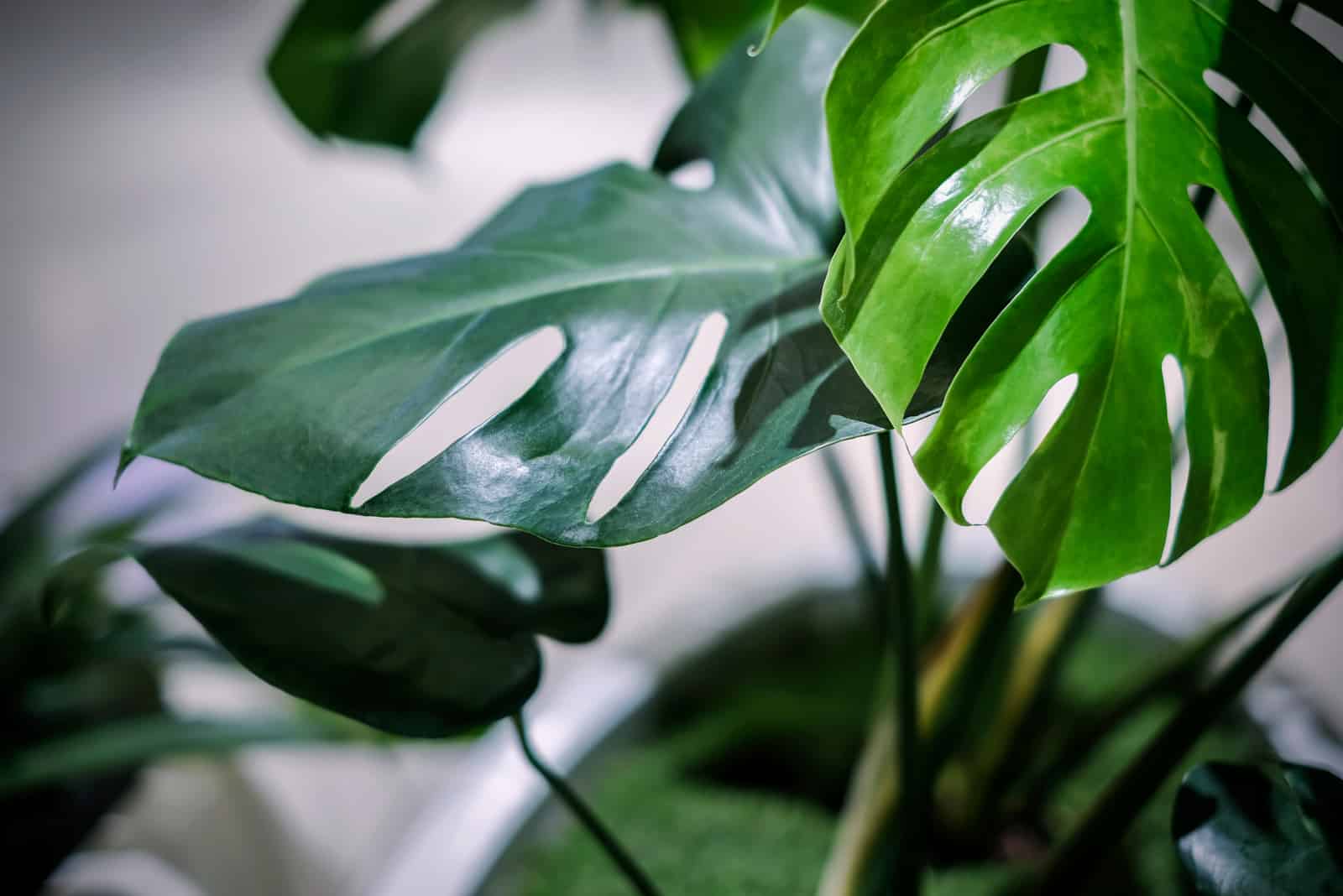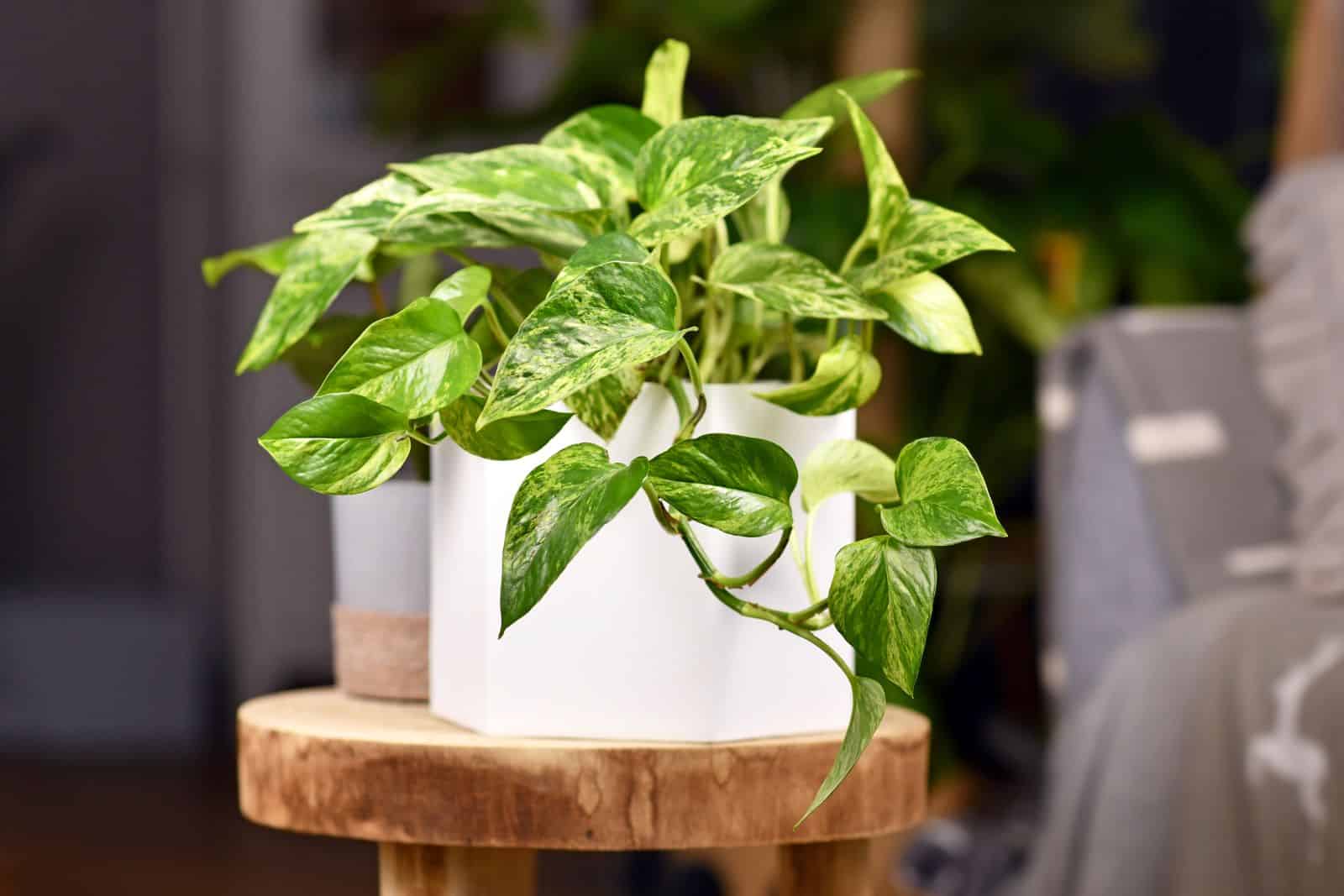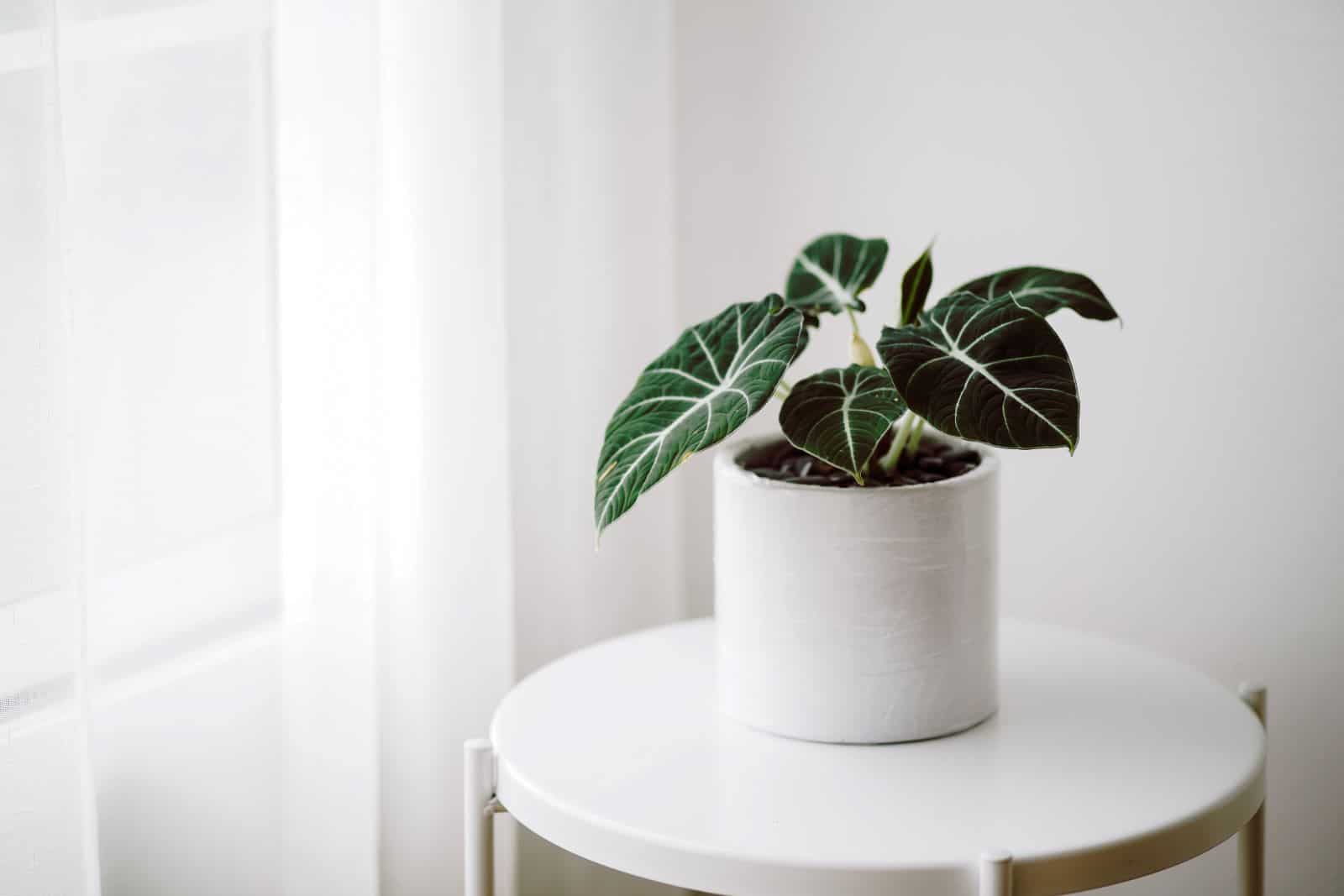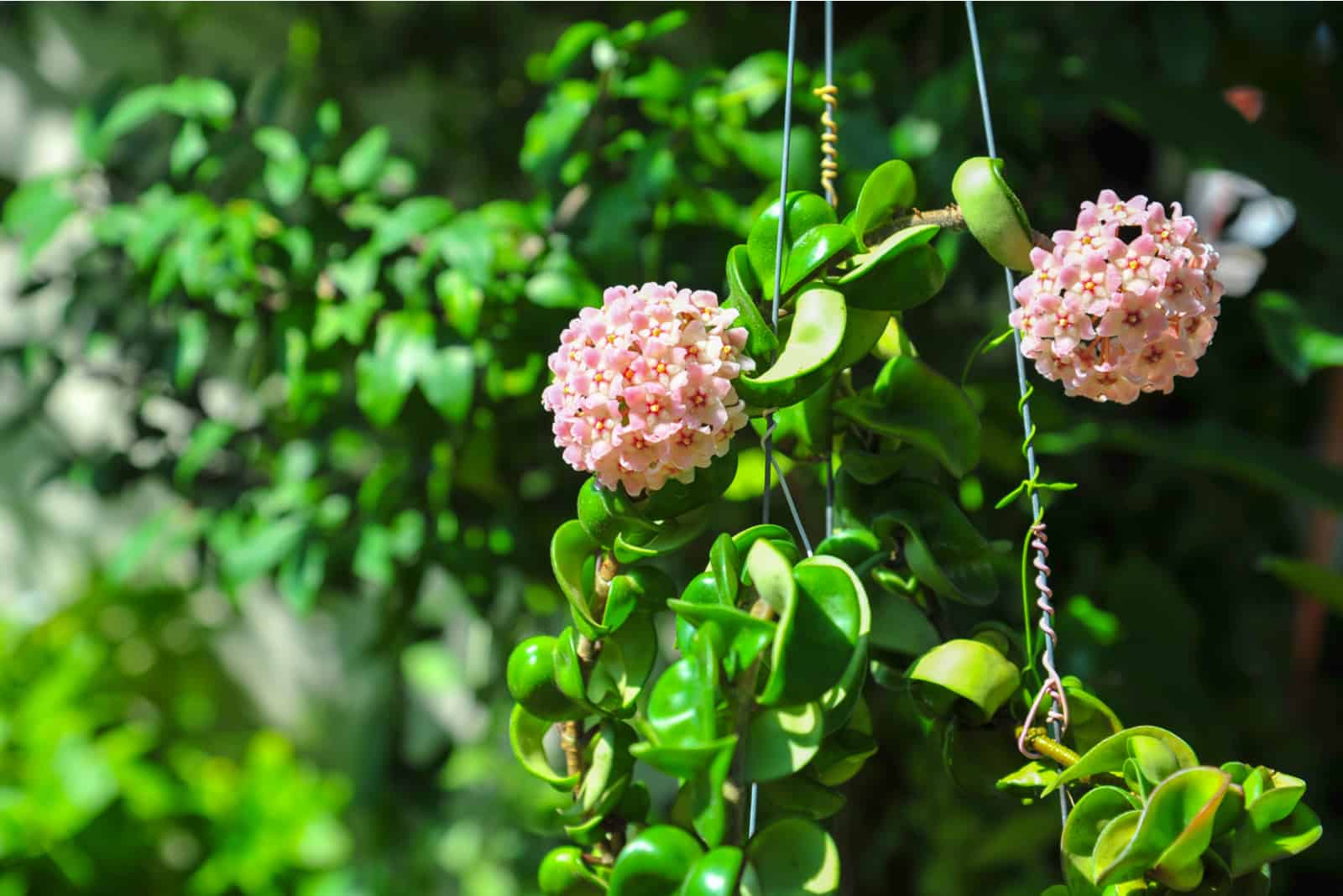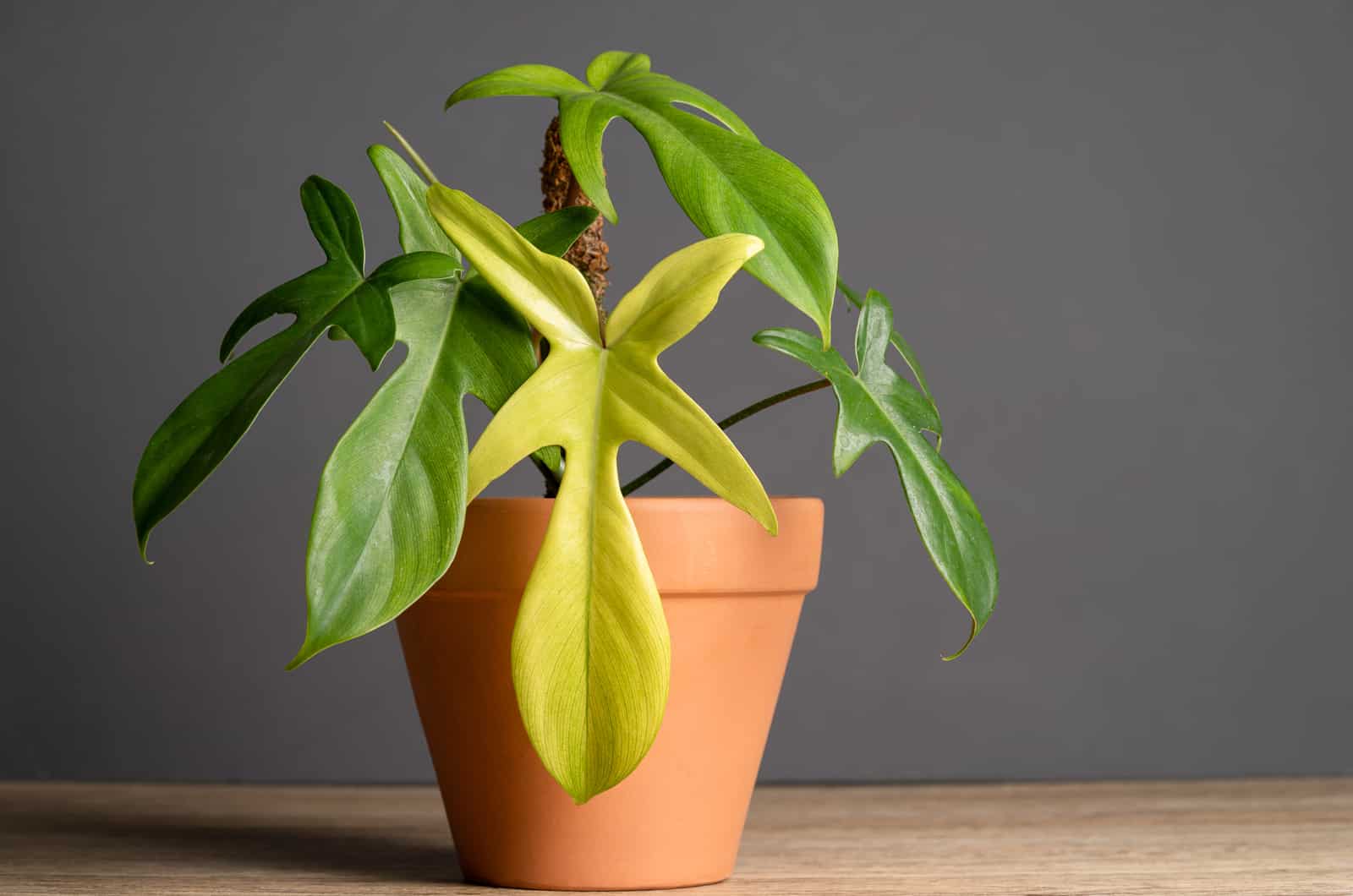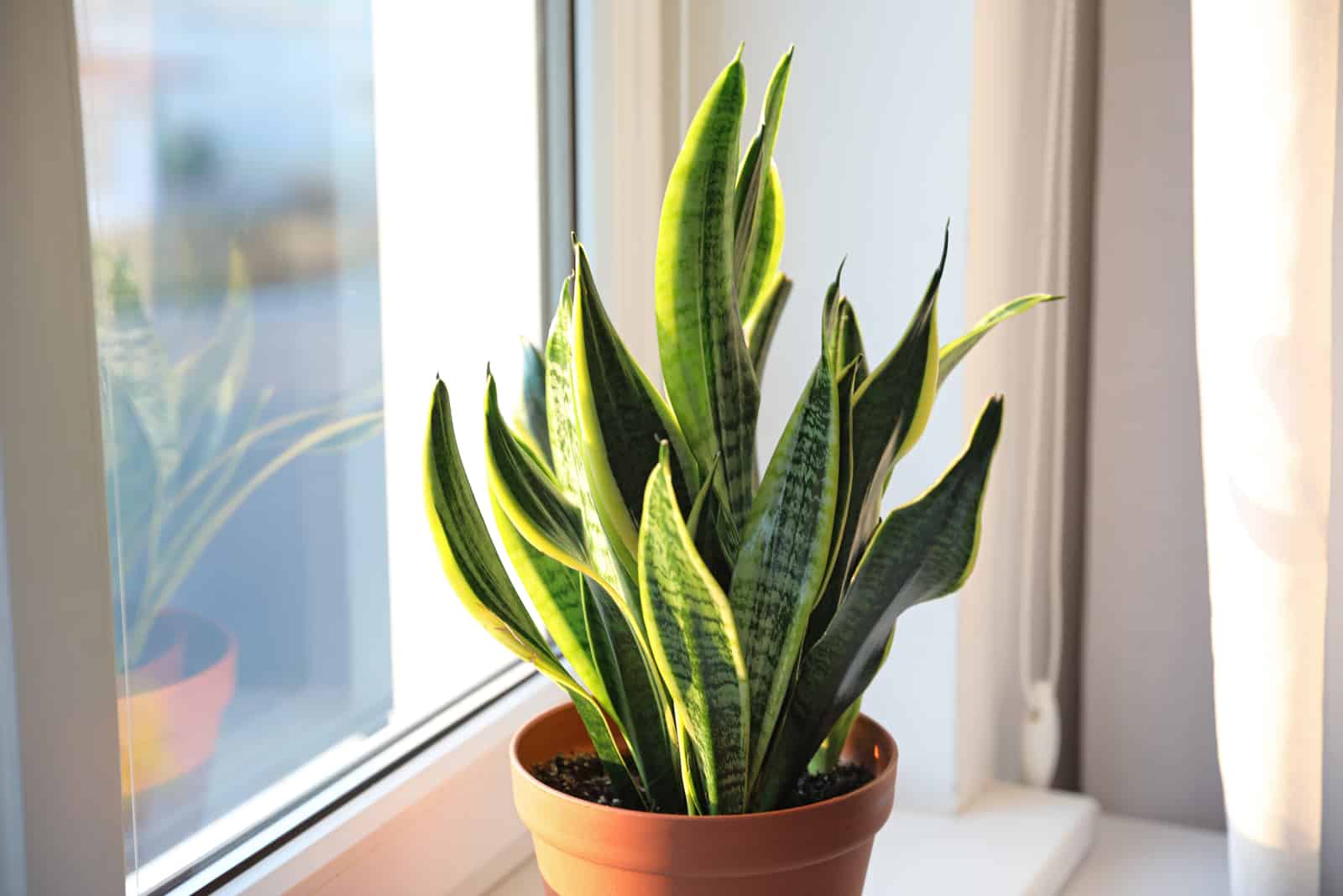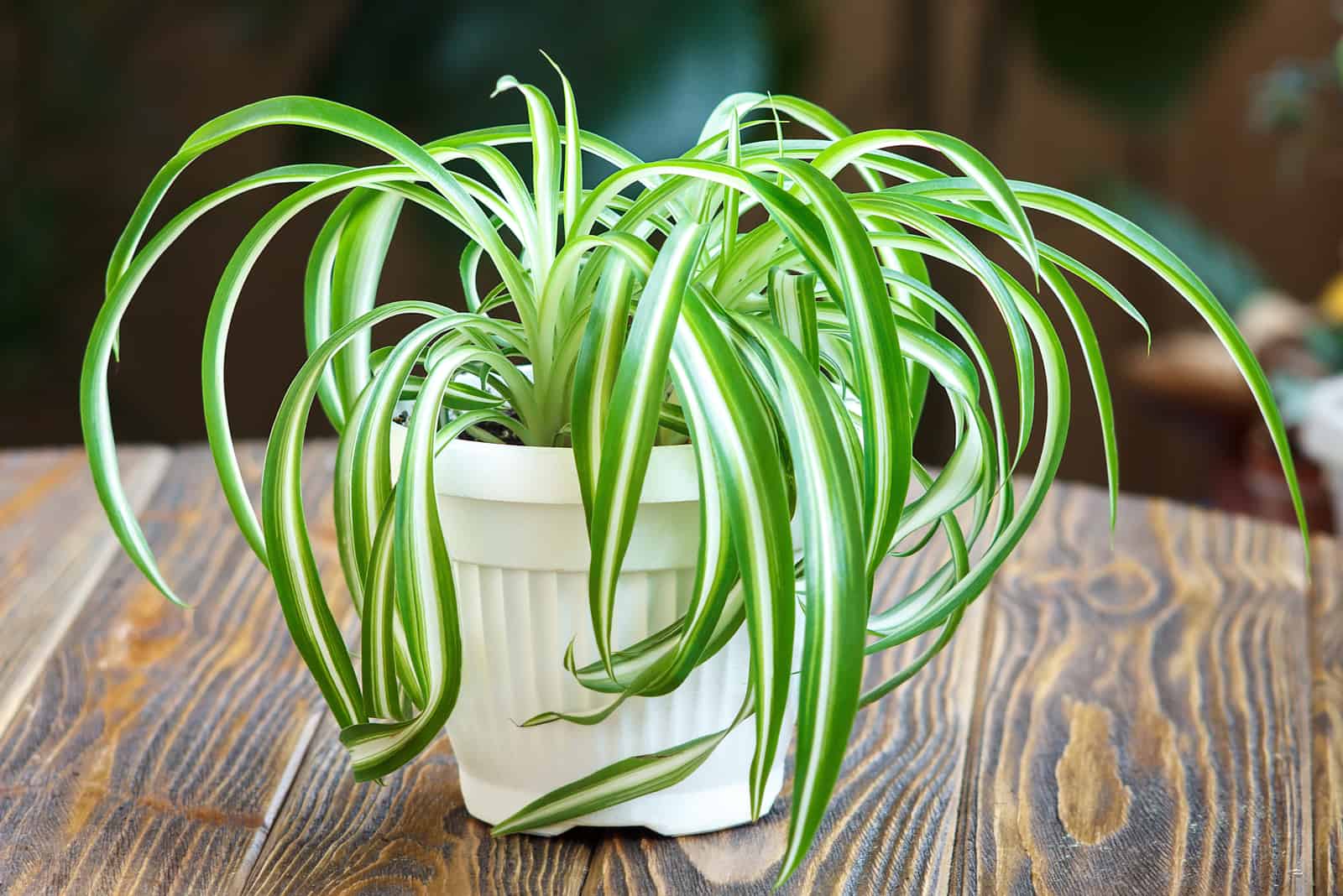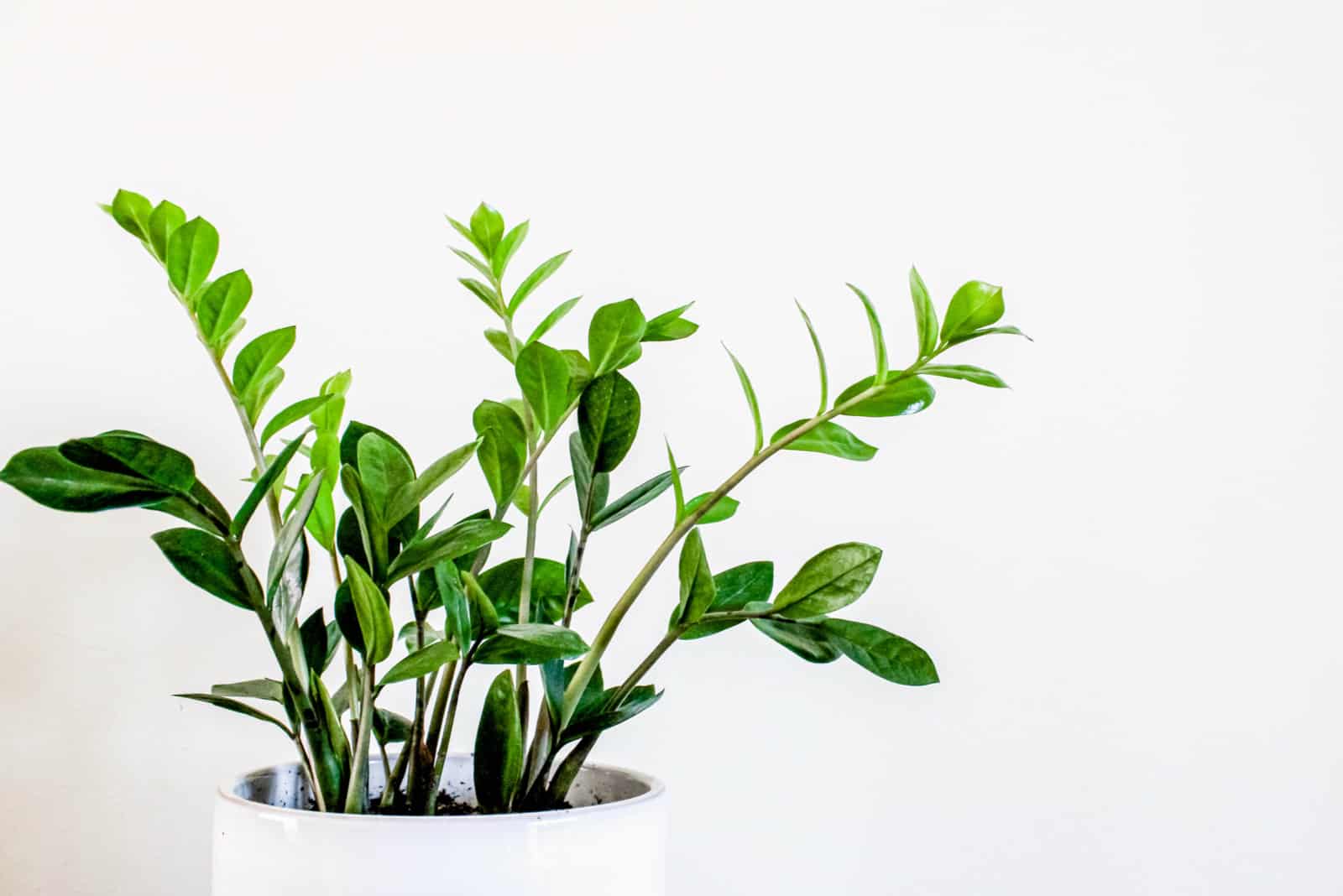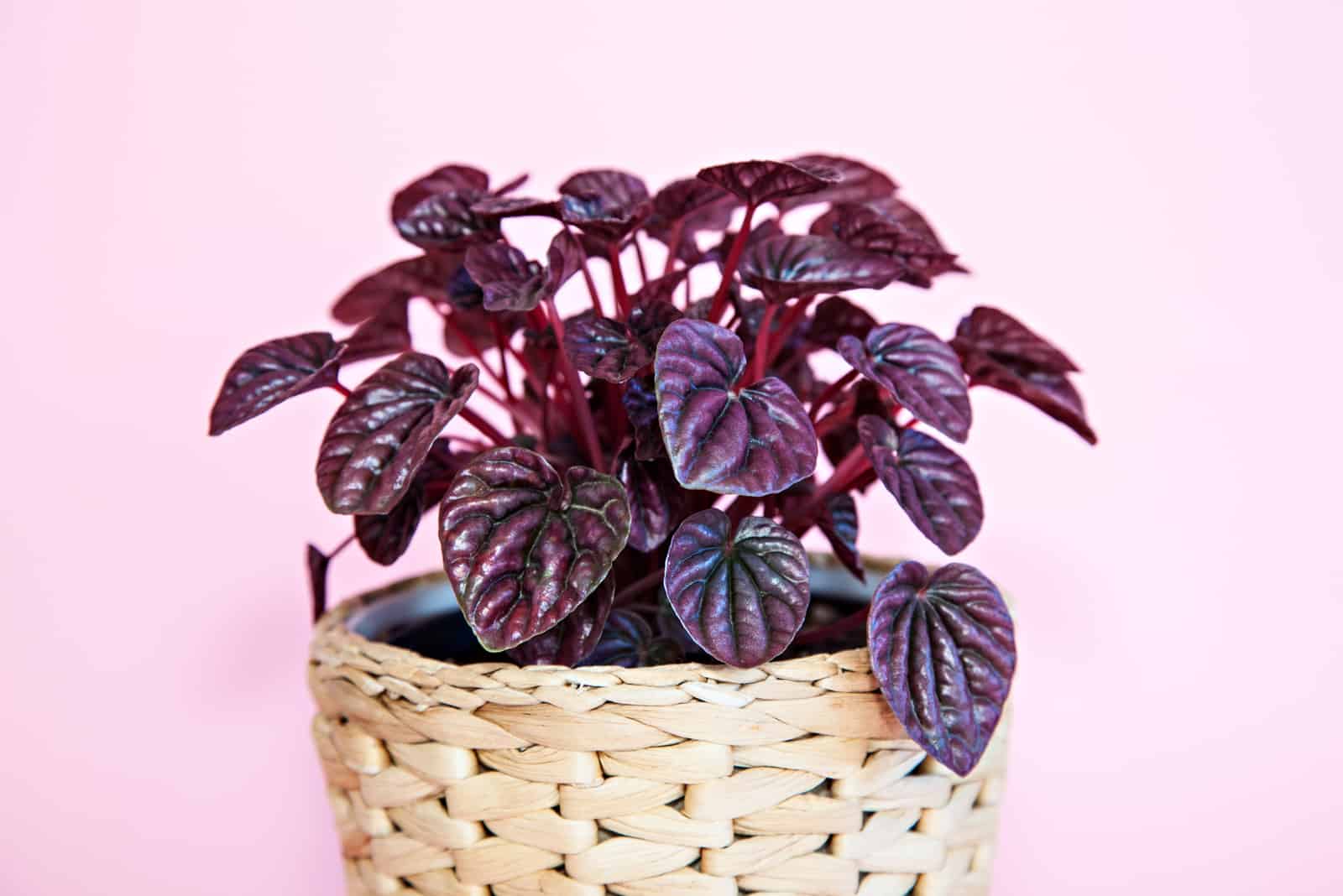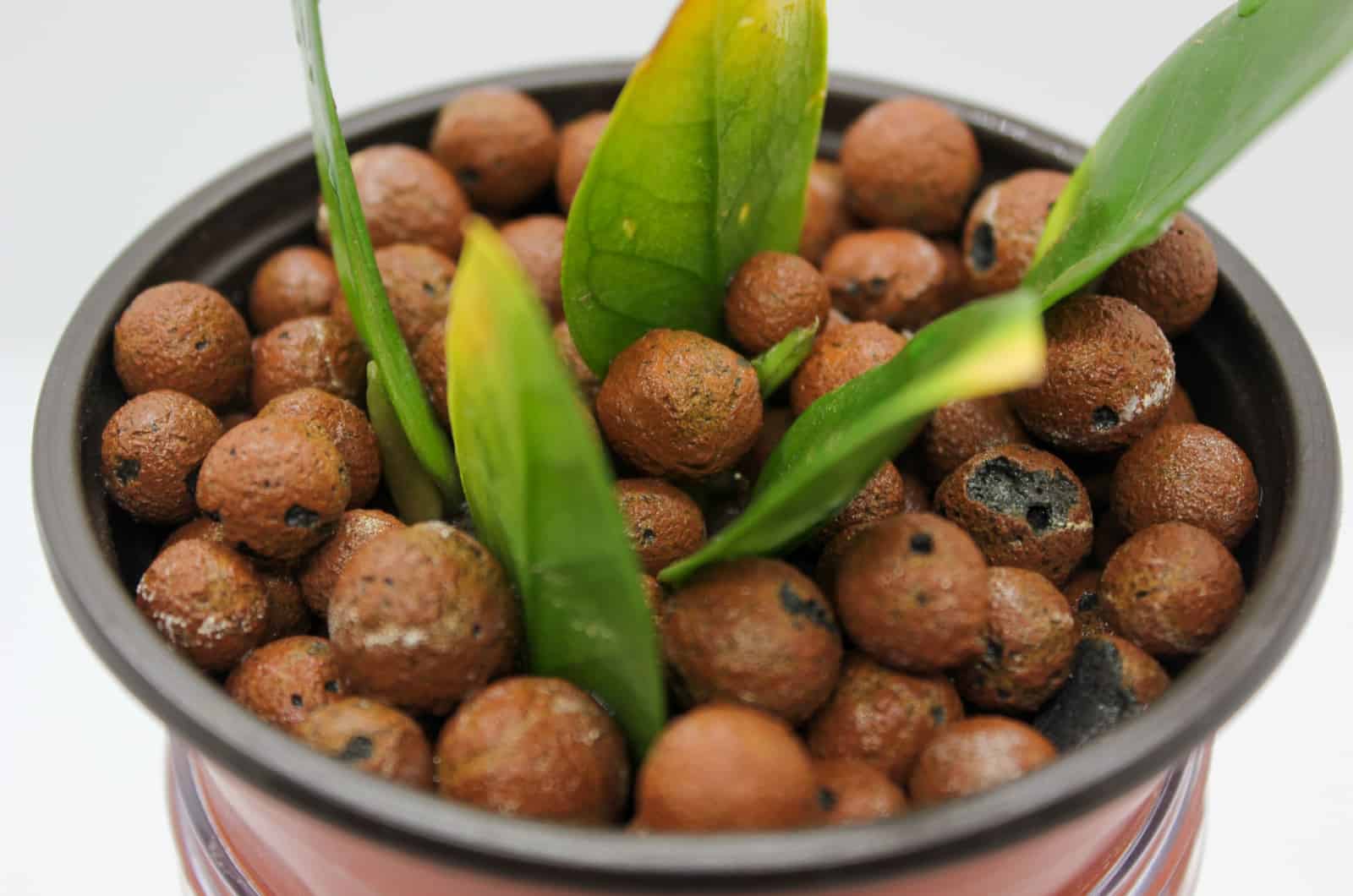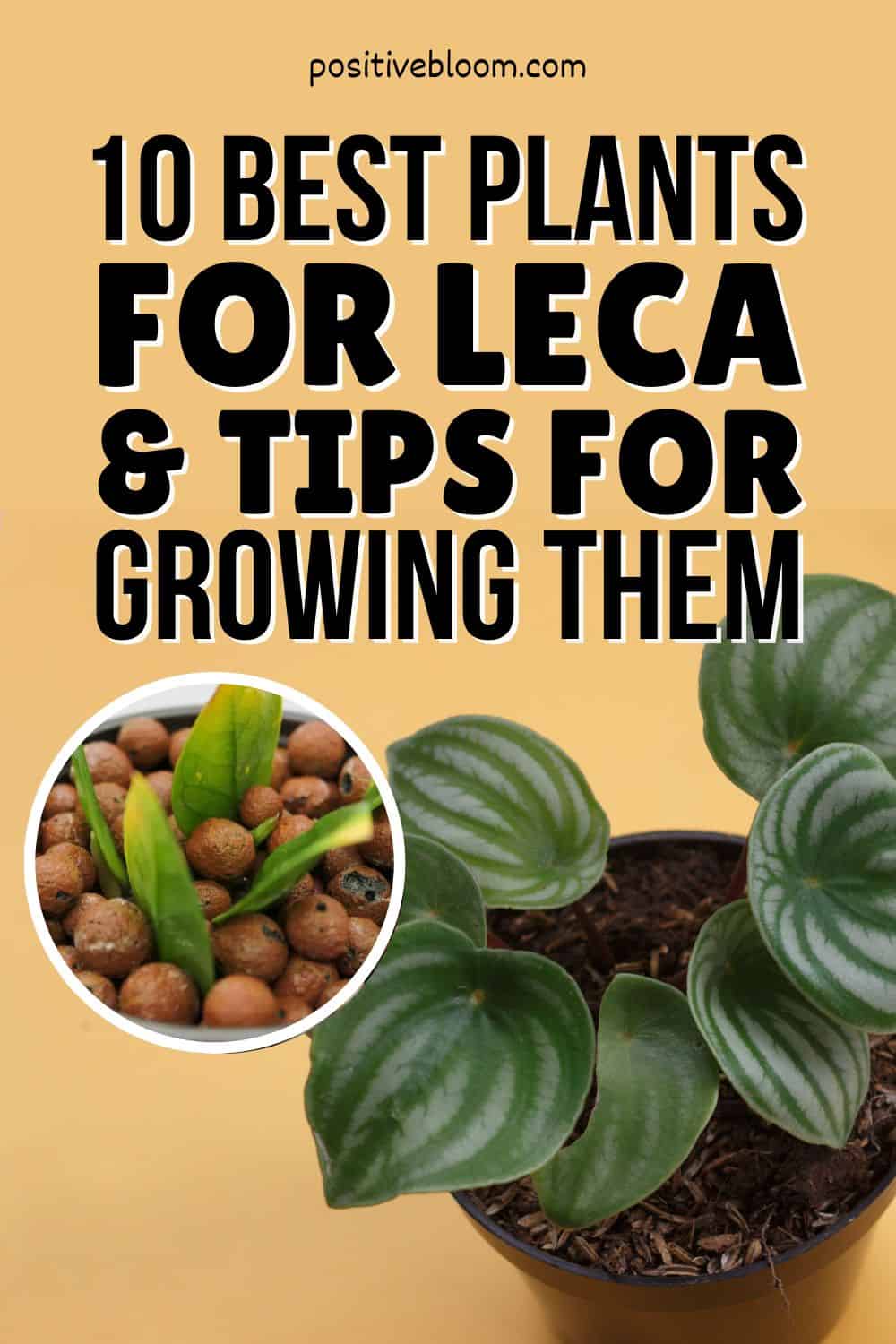There are so many awesome houseplants to choose from and so little room for all of them to fit in! Of course, some of them fit better into our interior than others, which is why we can prioritize which ones we get.
Another thing that can help us decide which ones to get is their ability to grow in semi-hydroponics systems such as LECA (which stands for lightweight expanded clay aggregate).
These clay balls have many pros, and the main one is that they make caring for plants much easier, so they’re perfect for beginners.
However, not all plants can grow in soilless mediums, but we picked out our ten favorite plants that thrive in this substrate.
We also included some tips for watering, feeding, and propagating plants in LECA because it’s slightly different to take care of plants in LECA than in traditional potting soil.
Let’s get started!
10 Best Plants For LECA
There are many types of plants that thrive in semi-hydro systems, and if they have had issues such as root rot, yellow leaves, and spider mite or fungus gnats infestations in the past, it’s a good idea to transfer them into LECA.
Succulents, aroids, and epiphytes are just a few plants that thrive in LECA balls, and below, you can read more about some of these varieties.
Let’s get started!
1. Monstera Deliciosa
Monstera deliciosa, commonly known as the Swiss cheese plant or even philodendron monstera, is an excellent choice to grow either in soil or LECA.
Here are its specifics:
Scientific name: Monstera deliciosa
Native habitat: Central America
Growth rate: Moderate growth rate
Size: Approximately 3 feet tall and 2-3 feet wide
Toxicity: Toxic to pets
The care guide for monstera deliciosa or philodendron monstera is pretty straightforward. It prefers to be at room temperature, thrives in high humidity, and grows best in bright indirect sunlight.
It loves well-draining growing mediums, but what happens if you switch to LECA and water? That substrate certainly isn’t draining!
Don’t worry! This medium provides plenty of aeration, and LECA itself soaks in some of the moisture, so your plants won’t suffocate.
Just don’t forget to feed them with a hydroponics fertilizer because this medium doesn’t contain any nutrients on its own.
2. Golden Pothos
Bright green leaves with random yellow variegations are everything a modern room requires, and the golden pothos would be delighted to fulfill this wish!
Before we get into any more detail, let’s look into its specifics:
Scientific name: Epipremnum aureum
Native habitat: French Polynesia Islands
Growth rate: Fast-growing
Size: 20-40 feet long
Toxicity: Toxic
Plant care for this pothos variety is quite simple: it needs a well-draining potting mix, indirect light, high humidity, and water whenever the topsoil is dry.
However, this variety is somewhat susceptible to overwatering, especially because its natural habitat is the tropics, and people feel more inclined to water it when they hear that.
And that’s where LECA comes into play! Believe it or not, it is quite tricky to overwater plants when they’re grown in this medium, so it’s the perfect option for your golden pothos.
Just add more fluid when you notice that the water level has fallen below the recommended amount.
3. Alocasia ‘Black Velvet’
Alocasia ‘Black Velvet’ is an aroid that can thrive in LECA clay just as well (if not better) as it can in soil.
Let’s look at its info before examining its basic needs:
Scientific name: Alocasia reginula ‘Black Velvet’
Native habitat: Borneo
Growth rate: Slow grower
Size: Approximately 10-15 inches
Toxicity: Toxic to cats and dogs
The good news is that alocasia black velvet care is relatively simple, and you only need to ensure that you water it once a week (or when the topsoil dries out) during its growing season.
It prefers well-draining soils and containers with drainage holes, but you can grow it using passive hydroponic LECA and also have it flourish.
You can even propagate it in water and transfer it into LECA clay pebbles as soon as its root system has developed a bit. This will actually cause less shock because it will already have water roots and be able to adapt to its new home more easily.
LECA only increases aeration, which provides the perfect environment for root growth and plant development, so consider moving your alocasia to clay balls if you notice stunted growth, yellow leaves, or any other problems.
You’ll definitely be able to control watering more easily, and monitoring plants in glass and see-through vessels gives this term a whole new meaning!
4. Hoya
Another epiphyte that thrives in LECA is hoya. Unfortunately, you’ll have to say goodbye to regular hanging baskets if you choose this method, but Amazon has some fantastic glass hanging planters you can try out – and you can even use them for your succulents too.
Below you can read more about the general specifics of hoya plants:
Scientific name: Hoya
Native habitat: Southeast Asia and Australia
Growth rate: Slow to fast growers, depending on the variety
Size: Approximately 12-20 feet in its natural habitat
Toxicity: Non-toxic
Hoya are a colorful species that require good drainage, so enriching the soil with perlite, orchid bark, peat, etc., is a must. However, you can make your life a lot easier by simply placing some LECA balls into a glass planter, filling it halfway up with water, and placing your plant in it.
There’ll be no more worrying about whether your plant needs to be irrigated; simply add more fluid once the level drops below a third of the pebble’s volume.
Now all that’s left is to add some hydroponics fertilizer and provide your plant with a source of indirect light.
5. Philodendron
Philodendrons are timeless houseplants that every self-respecting gardener should grow. And those who love to reuse LECA pebbles will rejoice to hear that you can grow these plants in this medium!
Here is the main info about philodendrons:
Scientific name: Philodendron
Native habitat: Tropical America
Growth rate: Fast growth rate
Size: 1-20 feet, depending on the species
Toxicity: Toxic
There are many rare and exotic philodendron species that you can grow in glass containers filled with hydroton, LECA pebbles, and water.
However, you’ll have to make certain arrangements, such as investing in new containers with no holes in the bottom of the pot and hydroponics fertilizer.
But once you see how your plants thrive in this soilless medium, you’ll wish you had transferred them to it earlier.
You can stop wondering what’s causing your plant’s yellow foliage too. You would definitely notice root rot in a glass vessel, but overwatering is a rarity when growing houseplants in LECA, so your plant’s yellow leaves are most likely caused by inadequate lighting.
Therefore, all you have to do is place your plants in a brightly lit area, and you’re done!
You probably won’t even need to mist your philodendrons because water that evaporates from the container will humidify the air around them, making it more suitable for these tropical plants.
6. Orchid
Orchids are another epiphytic variety that doesn’t necessarily need soil in order to develop healthily.
Let’s look into its specifics before discussing this matter any further:
Scientific name: Orchidaceae
Native habitat: Every continent except Antarctica
Growth rate: Slow growth rate
Size: 0.1 inches to 10 feet, depending on the variety
Toxicity: Most orchids are non-toxic
The good news about growing orchids in LECA is that it makes repotting a lot easier. You won’t have to guess when it’s time for replanting; just look at the plant’s roots, and if you can see that they don’t have any room left for growth, you can move them to a larger pot.
You won’t have to worry about over or underwatering either, as you’ll be able to see the amount of water left in a glass vessel and only need to fill it when the level becomes critically low.
You’ll still have to do a few things to help your plants thrive. Place them in a well-lit area where they can get at least 6 hours of light each day, and add some nutrient solution to the medium to compensate for the lack of organic matter.
7. Snake Plant
We all love snake plants because they have great benefits, including filtering certain toxins from the air and complementing almost any space.
Let’s learn some specifics about them before continuing:
Scientific name: Dracaena trifasciata (Sansevieria trifasciata)
Native habitat: Tropical Africa
Growth rate: Moderate growth rate
Size: Approximately 12 feet outdoors and 8 feet indoors
Toxicity: Toxic to pets
There are many causes of a snake plant not growing, and most of them have to do with inadequate watering, humidity levels, nutrients, or being pot-bound.
Luckily, we can avoid these issues by simply placing this plant in LECA and water and making sure the temperatures are between 65-75°F.
You’ll also need to ensure your plant gets bright indirect light throughout the day.
These clay balls made in rotary kilns can save you a lot of trouble and make your gardening experience even easier.
8. Spider Plant
Spider plants are attractive indoor plants that make every room more beautiful, but put them in LECA and a glass container, and you’ll have something truly transcendent!
Let’s learn more about this plant:
Scientific name: Chlorophytum comosum
Native habitat: Tropical and subtropical parts of Africa, Australia, and Asia
Growth rate: Fast grower
Size: 12-15 feet
Toxicity: Non-toxic
As a general rule, spider plants don’t need much; well-draining soil, plenty of indirect light, and water whenever the topsoil is dry is quite enough.
But you can make caring for this houseplant so much easier by transferring it into soilless mediums like LECA.
These clay balls absorb moisture and create air pockets, so your plants actually enjoy their time in glass containers.
You won’t have to water them too often (not even every couple of days when the temperatures are incredibly high) as there’s too much moisture for your plants to use up that quickly.
Watering them once a month is quite enough (or even less if the water level doesn’t fall too low).
Furthermore, a see-through container allows the sun to reach your plant more efficiently.
You will have to put in some work. LECA and water don’t contain the nutrients your plants need for healthy growth and development, so you will have to feed them whenever you water them.
9. ZZ Plant
ZZ plants have many uses, though we usually grow them due to their stunning looks.
Let’s look into their specifics, and then we’ll learn more about their care:
Scientific name: Zamioculcas zamiifolia
Native habitat: Eastern regions of Africa
Growth rate: Slow-growing plant
Size: About 3-4 feet tall
Toxicity: Toxic
The ZZ plant is an excellent Feng Shui plant, but it has more benefits than just bringing peace, prosperity, and wealth!
It has air-purifying abilities, so it’s no wonder that it adorns so many homes.
Even better is that you can grow it in LECA as well.
I don’t know whether it’ll mess up the Feng Shui, but it will definitely make your room more interesting and this plant easier to take care of.
You’ll just need to ensure that it gets enough indirect light to prosper, so if you notice any yellowing of the leaves, you should move it to a brighter spot.
You will have to water and fertilize it, but not very often because water cannot evaporate as quickly as it does from the soil.
Simply add more water and fertilizer once a month or so, depending on the temperature and the weather conditions.
10. Peperomia
The last plant we will examine in this article is peperomia, and there are so many varieties of this plant to choose from, whether you want something green, burgundy, or variegated to decorate your home!
Here are its specifics:
Scientific name: Peperomia
Native habitat: They can be found in all tropical and subtropical regions of the world
Growth rate: Slow-to-moderate growth rate, depending on the variety
Size: The majority are about 1 foot tall
Toxicity: Non-toxic
Like all tropical plants, peperomias require bright indirect sunlight, irrigation once a week (or whenever the top few inches of the soil are dry), a well-draining medium, and some additional food from time to time.
If you transfer it to LECA, you can water and feed it at the same time, so the frequency of those chores is significantly reduced. You won’t even have to irrigate or fertilize them more than once a month during hotter seasons.
The plants would still need the same amount of sunlight, so place them near east or south-facing windows where they can bask in sunlight without getting sunburnt.
Which Plants Don’t Like LECA?
Unfortunately, not all plants prefer LECA to traditional mediums, and calatheas are one of those species.
They don’t like being disturbed too often, and if you’ve transferred your plant from the soil into LECA, you’ll likely have to handle and move it quite often.
That’s not because of LECA, but the soil.
When moving your plants into LECA clay pebbles, you’ll have to clean the plant’s roots, and it’s nearly impossible to do that from the first go. It’s more likely that you’ll have to clean the roots over and over again until the soil’s completely gone.
After replanting from soil to LECA, you’ll have to clean both the plant and the medium in a month or so.
Calatheas cannot handle being disturbed very often and will most likely fall into a state of shock.
Ferns, elephant bushes, corn, and potatoes also prefer regular potting soils and mixes to LECA, either because they don’t like being handled too often or because they need a constant supply of nutrients in their growing medium.
Even though there are special fertilizers for LECA mediums, sometimes they’re not enough. These clay pebbles also absorb some of the nutrients together with water and don’t leave much available to your plants. That’s why this medium is not the best option for heavy feeders!
How To Use LECA for Plants
Even though some plants don’t like clay pebbles, that doesn’t mean you should completely shun them.
Therefore, we have brought you a guide to using LECA for plants to help you out.
Let’s begin!
Transferring Plants Into LECA
Transferring your plants from soil to LECA isn’t that difficult, but there are still some things you need to be aware of.
It’s nothing too complicated, as you can see from this step-by-step guide:
Step 1. Select a transparent glass or plastic vessel without drainage holes so that light can shine through and water is retained.
Step 2. Take the plant out of the soil and remove all the dirt you can. Be gentle and don’t damage your plant’s roots because it’ll make the adjustment much harder.
Step 3. Put the roots under slow running water or fill a bowl with water to wash out the rest of the dirt and soil.
You probably won’t be able to clean everything, but don’t worry because you can clean the roots and clay balls again in a month.
Step 4. Put the plant in the container, fill it halfway up with LECA, and add some water together with hydroponic fertilizer.
How To Water Plants In LECA
If you have just bought some LECA clay, you should rinse it and soak it in water for about 48 hours, changing the water after 24 hours.
Once the LECA expands, you can add it to the vessel and fill it with water.
The good news is that you don’t have to water your plants that often. Whenever you notice that the water level is below a third of the LECA’s volume, you should add more, but nothing will happen if you wait until all water is gone.
Of course, this might lead to more (unnecessary) work because you will have to hydrate the LECA more often. If you use dry LECA, it might drink all the moisture and leave none for your plant, which can be fatal.
Always monitor the LECA, and as soon as you notice that it has shrunk, rehydrate it.
Generally speaking, plants grown in LECA don’t require frequent watering. You might need to irrigate them every 3-4 weeks, which reduces this chore tremendously.
Fertilizing Plants In LECA
Feeding plants growing in LECA isn’t that difficult, you just have to do it every time you water, and that’s it!
These clay pebbles don’t contain any nutrients on their own, so adding more water to the medium dilutes the minerals that have been there since the last time you added fertilizer.
You cannot use any old plant food because regular fertilizers don’t make nutrients available in the form semi-hydro system plants can absorb.
Therefore, you should get some hydroponics fertilizer and follow the instructions on the box about the amount you should use.
Propagating Plants In LECA
You’ve undoubtedly heard about the benefits of water propagation, and propagating in LECA isn’t that different.
In fact, you simply add LECA (which has no nutrients of its own) to a glass vessel filled with water, and that’s it!
However, propagation includes taking cuttings, so check out this short guide on how you can do it on your own:
Step 1. Ensure the LECA balls are moist, expanded, and half-fill the container.
Step 2. Choose a healthy stem from your plant and make a cutting with a couple of leaves. Remove the bottom leaves that would be submerged in water and place the cutting into the glass vessel. Secure it with more clay pebbles and then fill it halfway up with water.
Step 3. Monitor the cutting and add more fluid as the water level of the vessel reduces. Some growers even prefer rinsing the LECA every time they change the water just to be on the safe side.
Step 4. Place the glass container in a place with plenty of sunlight and wait until the transparent roots develop. After they get a bit stronger, you can repot your plant in a new pot filled with fresh soil or LECA.
FAQ
This article answered some crucial questions about LECA, but there are still some things to learn about this marvelous medium.
Therefore, we decided to make a little Q&A corner where we’ll answer your most frequently asked questions about LECA and plants.
Let’s dig in!
Why are my plants dying in LECA?
The most common reasons your plant is dying after being transferred to LECA are shock due to frequent disturbing, inadequate amounts of sunlight and fertilizer, or root rot.
Root rot is quite rare when growing plants in LECA from the start but is a common occurrence in plants transferred to LECA from the soil.
Dirty roots with soil still on them can result in too much moisture in the environment and lead to root rot.
Therefore, it is essential to clean the roots before moving plants to LECA and to keep cleaning them even after the transplant (approximately once a month) until they’re all clean.
You can even use products like fungicide, bactericide, algaecide, and virucide all in one to minimize the possibility of root rot and other infections.
These chemicals will reduce the possibility of root rot due to the presence of soil while your plant grows new water roots that will sustain it in the future.
How long does it take for LECA to break down?
LECA will never break down due to its lack of organic components, so you can use it forever – even for different types of plants.
You just need to clean it thoroughly and get to planting!
Conclusion
This article presented the ten best plants for LECA. They are incredibly easy to maintain, and even more so when grown in clay pebbles.
LECA keeps them happy for longer periods and relieves you of tedious watering chores because you’ll need to irrigate plants growing in LECA much less often.
We also included some plants that prefer regular soil over LECA, as well as some tips on tending to plants in LECA, such as watering and feeding.
Finally, we included step-by-step guides for propagating and transferring plants from soil to LECA so you can start your own semi-hydroponics garden today.
Until next time!
Like this post? Share or pin it for later!

